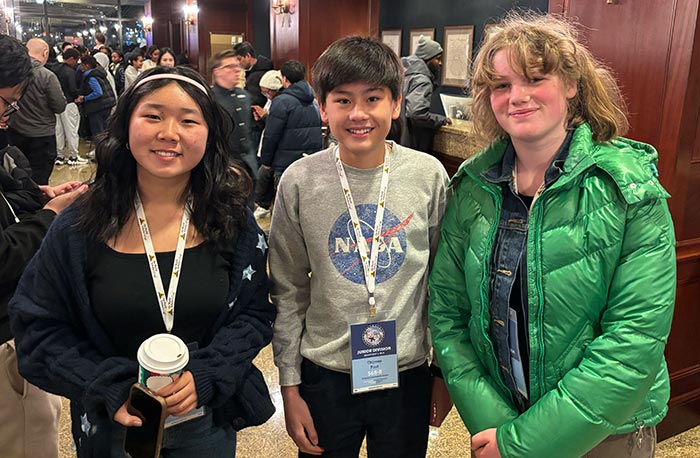Teens save water, beautify CHS campus
Claremont High School is going native, thanks to a landscaping project undertaken by students in Marizka Rivette’s AP environmental science class.
As part of the CHS Waterwise Project, students have put in hours tearing out the grass and grading the land surrounding the administration office. They have watched and learned as the sprinklers were replaced with a drip system.
On Tuesday, the air was thick with the smell of mulch and sage as the teens put in drought-tolerant plants indigenous to the area.
“I think it’s a great way to learn, actually being out here with a hands-on project,” senior Austin Antillon said, shovel in hand.
The project began when David Sawhill—math, yearbook and Wolfcast teacher and the school’s Green Team leader—pointed out to Ms. Rivette that the high school had a small pool of grant money available for a green enterprise.
The pair decided to use the $400 grant, which comes courtesy of Sustainable Claremont, for the administration redux. They are still seeking community donations for this and future projects.
“By having students work on a waterwise landscape, they learn how to conserve water in a time of drought and learn about native plants, as well as encourage the school district to save money and maintain a sustainable environment,” Mr. Sawhill said in recent article in the Wolfpack student newspaper.
Ms. Rivette and Mr. Sawhill found guidance and willing help among several plant experts, particularly CHS alumn Andrew Bentson, who is co-founder of the BAM (Bentson And McCallion) Water Wise landscaping company.
“It’s really to spread the message of creating sustainable landscapes as opposed to water-wasteful ones,” Mr. Bentson said.
He took a moment to explain the mechanics of the project while students placed an array of plants native to the local chaparral ecosystem. These include four kinds of sage, buckwheat, California sagebrush, California lilac, buckwheat, apricot mallow, monkey flower, ornamental grasses and succulents.
The piece de resistance is a Manzanita tree that Mr. Bentson noted will grow to be between 8 and 10 feet.
In preparation for the CHS Waterwise Project, students learned about native landscapes at the Rancho Santa Ana Botanic Garden as well as Oakmont Elementary School. Oakmont is home to the Biome project, another endeavor in which BAM has been heavily involved.
Next, Mr. Bentson held a couple of brainstorming sessions, where the students gave input into how the project should look. Then Mr. Bentson drew up plans, featuring a decomposed granite path and a seating area where students can rest on large boulders. The kids were then put to work on marketing, inventory, design and construction.
The latter aspect included piling up the dirt in order to create little hills and valleys as well as a swale. This makes the environment look more natural and helps the soil with water capture and drainage.
Ms. Rivette said she is excited about the swap-out. People used to walk by the administration building and not even notice the grass. Now, the area has an engaging environment that she hopes will get plenty of use.
“I’m really getting the vibe,” she said. “The students can sit here between classes and smell the sage.”
Beyond the aesthetics, there is a direct and calculable benefit to the district, according to Mr. Bentson: “After five years, we estimate they will save $4,000 and 850,000 gallons of water. After 10 years, there will be an estimated savings of $9,500 and 1.8 million gallons of water.”
It is likely that some of the students involved in or inspired by the CHS Waterwise Project will take home some drought-tolerant ideas for their own yards. Austin, however, already has a household in line with conservation.
“My garden is pretty water-wise. My folks are into the economic aspect of it,” he said.
—Sarah Torribio
storribio@claremont-courier.com










0 Comments